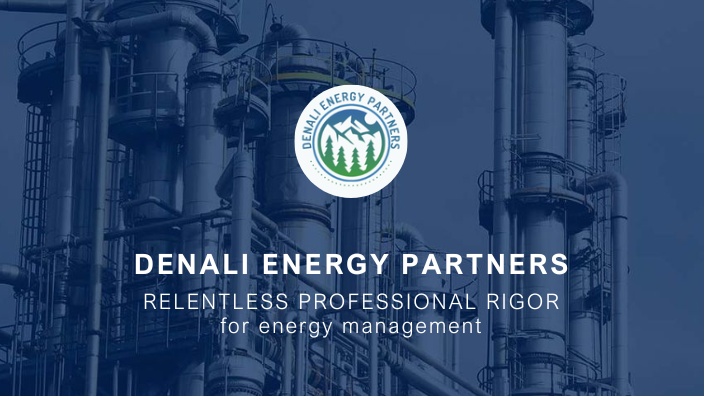Understanding Energy Price Volatility in Industrial Parks: Definition of Volatility in the Industrial Context
Denali-ep
| 16 de octubre de 2024
Understanding Energy Price Volatility in Industrial Parks: Definition of Volatility in the Industrial Context
Introducción
Energy price volatility in the industrial sector refers to the fluctuations in the prices of energy resources that directly affect industrial parks. These variations can result from factors such as changes in supply and demand, shifts in the global market, and unforeseen events that disrupt energy supply.
Factors Driving Price Volatility
The factors influencing price volatility include political instability in energy-producing regions, fluctuations in fossil fuel prices, and weather conditions affecting the production of renewable energy. All these elements can cause increases or decreases in energy costs for industrial parks.
Impacts of Volatility on Industrial Parks
Increased Operating Costs
For industrial parks, volatility in energy prices can lead to significant increases in operating costs. Since these parks often operate with high energy consumption levels, rising prices can erode profit margins and affect competitiveness in the market.
Challenges in Financial Planning
The fluctuation of energy prices also presents challenges for financial planning in industrial parks. Uncertainty in energy costs makes it difficult to create accurate budgets and can hinder the ability to make strategic investments and plan for the long term.
Strategies to Mitigate Risks in Industrial Parks
Long-Term Energy Contracts and Their Utility
An effective strategy for managing volatility is entering into long-term energy contracts. These agreements allow industrial parks to lock in stable prices over an extended period, protecting them from short-term price fluctuations and providing predictability in costs.
Use of Financial Instruments for Price Protection
Utilizing financial instruments, such as futures contracts and options, can provide additional hedging against price volatility. These instruments enable industrial parks to secure future prices and reduce their exposure to risks associated with energy market fluctuations.
Energy Diversification: Beyond a Single Source
Diversifying energy sources is another key strategy. By employing a combination of energy resources such as electricity, natural gas, and renewables, industrial parks can reduce their dependence on a single energy type and mitigate the risks associated with price volatility from a specific source.

Advantages of Energy Efficiency in Industrial Parks
Reduction of Energy Consumption in Industrial Processes
Implementing energy efficiency practices can result in a significant reduction in energy consumption across industrial processes. Lower energy consumption not only decreases costs but also helps mitigate the impact of fluctuations in energy prices.
Cost Stability Through Efficient Practices
Energy efficiency also contributes to greater stability in costs. By optimizing energy use and minimizing waste, industrial parks can keep costs under control and lessen the impact of energy price increases.
Adoption of Renewable Energy Technologies in Industrial Parks
Key Renewable Technologies for Industry
The adoption of renewable technologies, such as solar, wind, and biomass energy, offers a viable alternative to fossil fuels. These technologies provide a more stable energy source and can reduce reliance on energy resources with more volatile prices.
Benefits of Renewables in Price Stability
Renewable energies are not only more sustainable, but they can also offer greater predictability in energy costs. By integrating these technologies into the operations of an industrial park, greater cost stability can be achieved, thereby reducing exposure to energy market volatility.
Comprehensive Energy Risk Management
How to Assess Exposure to Price Volatility
To manage risks associated with price volatility, it is crucial to conduct a thorough assessment of the industrial park's energy exposure. This includes identifying the most vulnerable areas and developing strategies to mitigate risks related to price fluctuations.
Specific Hedging Strategies for the Industrial Sector
Developing appropriate hedging strategies is essential to protect against price volatility. These strategies may include negotiating flexible energy contracts, investing in energy-saving technologies, and diversifying suppliers.
Success Cases in Risk Mitigation in Industrial Parks
Examples of Successful Industrial Parks
There are several cases of industrial parks that have successfully implemented strategies to mitigate the risks of energy price volatility. These examples demonstrate how a combination of long-term contracts, energy diversification, and energy efficiency can result in effective cost management.
Key Learnings and Best Practices
Analyzing these success stories provides valuable lessons on best practices for risk mitigation. Understanding which strategies have been effective and how they have been applied can assist other industrial parks in developing similar approaches.
Conclusion
Managing energy price volatility is crucial for the stability and profitability of industrial parks. By adopting strategies such as long-term energy contracts, utilizing financial instruments, diversifying energy sources, and embracing renewable technologies, industrial parks can reduce their exposure to price fluctuations and maintain efficient and profitable operations.
What causes energy price volatility in industrial parks?
Energy price volatility is caused by several factors, including changes in supply and demand, geopolitical tensions in energy-producing regions, fluctuations in fossil fuel prices, and extreme weather events that can impact renewable energy production. These factors can lead to significant price fluctuations that directly affect industrial parks.
How can industrial parks mitigate the risks associated with energy price volatility?
Industrial parks can mitigate risks by entering long-term energy contracts to secure stable prices, utilizing financial instruments like futures contracts and options for price protection, and diversifying energy sources to reduce dependence on any single type of energy. Implementing energy efficiency practices also helps lower overall energy consumption and costs.
What are the benefits of adopting renewable energy technologies in industrial parks?
Adopting renewable energy technologies, such as solar, wind, and biomass, provides a more stable energy supply and can help reduce dependence on fossil fuels. Additionally, renewables offer greater predictability in energy costs, contributing to long-term cost stability and sustainability.
How does energy efficiency impact operational costs in industrial parks?
Implementing energy efficiency practices can significantly reduce energy consumption in industrial processes, leading to lower operational costs. Efficient energy use minimizes waste and helps mitigate the financial impact of fluctuating energy prices, contributing to overall cost control and profitability.
What strategies can be used for financial planning in the face of energy price volatility?
To effectively plan financially amid energy price volatility, industrial parks should conduct thorough assessments of their energy exposure, develop flexible budgeting strategies, and consider hedging techniques. These can include negotiating flexible energy contracts and investing in technologies that enhance energy savings and operational efficiency.




